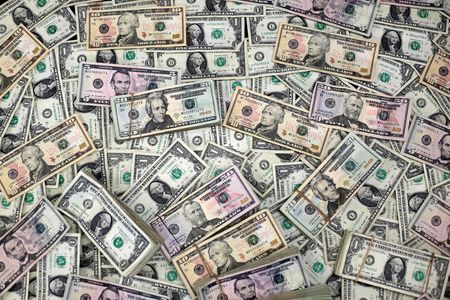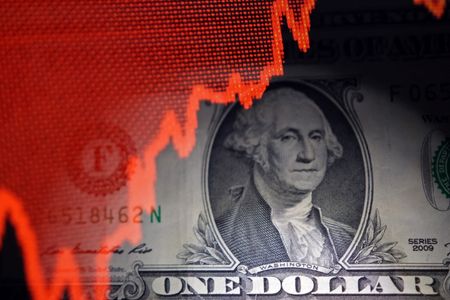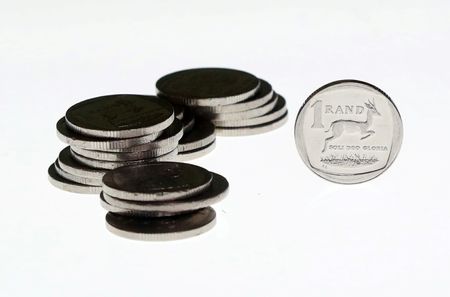By Medha Singh
(Reuters) -The dollar surged on Monday as the United States and China struck a truce to reduce reciprocal tariffs temporarily, easing fears of carnage from a trade war between the world’s two biggest economies.
The U.S. will reduce extra tariffs it imposed on Chinese imports in April to 30% from 145% and Chinese duties on U.S. imports will fall to 10% from 125%. The de-escalation surpassed investor expectations and followed negotiations over the weekend.
The greenback’s climb clobbered safe-haven currencies the most, rising 1.9% to 148.16 yen and 1.5% to 0.8443 Swiss francs.
“(U.S. President Donald) Trump has toned down his tariffs faster than anyone thought he could. It seems that tariffs on China will fall to manageable levels, albeit temporarily,” said Arne Petimezas, director of research at AFS Group in Amsterdam.
The dollar rose 1.1% against a basket of currencies to hit a more than one-month high. It was still down 2.3% from Trump’s April 2 announcement of sweeping tariffs as his often chaotic rollout of policies shook confidence in U.S. assets.
“Now the conditions are falling into place for a deeper adjustment and a bigger recovery of the dollar to catch up with U.S. equities and bond yields,” said Kenneth Broux, senior strategist at Societe Generale in London.
The euro tumbled 1.3% against the dollar to $1.111, on track for its steepest one-day loss this year. Sterling shed 1% to $1.318.
“We can see a bit more euro-dollar weakness as we’re breaking some key technical levels,” Broux said.
The focus this week will also be on U.S. Consumer Price Index (CPI) figures on Tuesday and on April retail sales due on Thursday for indications of how the trade spat has impacted the economy and expectations for further interest rate cuts by the U.S. Federal Reserve.
Traders on Monday bet on fewer rate cuts by the Fed and European Central Bank as economic prospects improved after the Sino-US trade deal.
RISK APPETITE IMPROVES
The New Zealand and Australian dollars, widely seen as proxies for risk assets, advanced 0.5% to $0.58790 and added 0.3% at $0.639, respectively.
China’s yuan hit a six-month high at 7.2001 yuan per dollar.
“Although the de-escalation of the trade war benefits both economies, the agreement… is likely to be viewed as a particular victory for China,” ING economist Lynn Song said.
“The reduction of tariffs on China is a sufficient enough reduction to allow for more or less a return of normal trade.”
Meanwhile, geopolitical tensions also appeared to ease over the weekend, further supporting risk sentiment.
India and Pakistan announced a ceasefire following four days of fighting between the nuclear powers which had rattled markets.
Ukrainian President Volodymyr Zelenskiy said he was ready to meet Russian leader Vladimir Putin in Turkey on Thursday for direct talks. That would be the first negotiations between the two countries since the early months of Russia’s 2022 invasion.
(Reporting by Medha Singh, Rocky Swift and Jiaxing Li, addiotional reporting by Danilo MasoniEditing by Shri Navaratnam, Emelia Sithole-Matarise, Gareth Jones and Ed Osmond)










